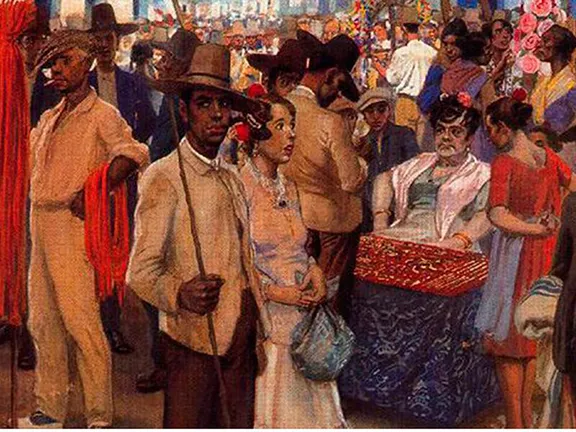Adolfo Lozano Sidro Cultural houses three museums Museo Histórico Municipal de Priego , Adolfo Lozano Sidro Museum and the Antonio Povedano Contemporary Landscape Art Centre in Priego de Cordoba, Andalucia
By Nick Nutter | Updated 7 Jun 2022 | Córdoba | Museums |
Login to add to YOUR Favourites or Read Later


Extract from Feria de Priego
The 19th century mansion, the Adolfo Lozano Sidro Cultural, in the Calle Carrera de las Monjas (“Path of the Nuns Street”) houses three museums.


Adolfo Lozano Sidro Museum (Photo courtesy Tourismo Priego)
The Museo Histórico Municipal de Priego is one of the better municiple museums in Andalucia. It specialises in archaeology. The limestone caves and shelters in the Sierra Subbeticas, of which there are dozens, have been occupied at different times since the Neanderthals lived in the area. Most notable are Cueva de la Murcielaguina and Cueavas de los Marmoles for Neolithic remains, and cave paintings.
The Iberian period is well represented and finds include a fine bronze dagger in a sheath, found as part of the grave goods in a 4th century BC burial. Although long buried beneath later buildings, the Iberians did have an oppidum at Priego de Cordoba.
The Roman, Visigoth and Moorish occupation periods are similarly well represented with many of the finds being local.


Iberian Dagger
Adolfo Lozano Sidro was born in Priego in 1872. He moved to Madrid at the end of the century and there produced most of his work. The museum houses over 70 of his paintings, a mixture of portraits and religious and oriental themes as well as typical scenes taken from life in Andalucia.


Upright Loom
Two rooms of the mansion are taken up with the Antonio Povedano Contemporary Landscape Art Centre dedicated to the artist Antonio Povedano who supported the Priego de Córdoba School of Plastic Arts (that is all the visual arts from painting to sculptures, photography etc), one of the oldest schools of its kind.
Figurative art is represented by the realism of José Lapayese, by the sense of magic of José Hernández, or by the expressive and colourful interpretation of Agustín Redondela, Vaquero Palacios, Manuel Capdevila and Agustín Úbeda, amongst others. The works of artists such as José Abad, Molina Montero, Antonio Suárez or José Vento are more abstract.